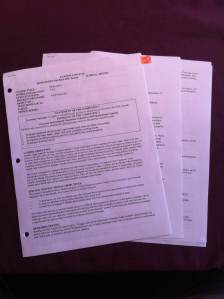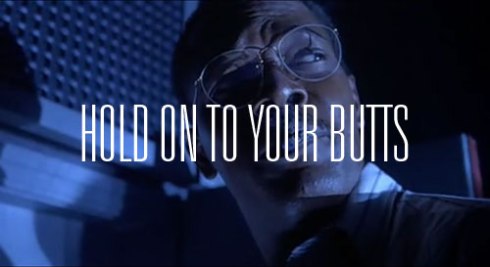Let’s face it. We all get tired. Hell, I’m exhausted right now, and we’re only half way through term. It’s going to happen, so what are the best ways of dealing with burnout?
Well, the most obvious solution is to work less, and stave it off that way. But if you’re anything like me – in a precarious, high-volume teaching scenario – that just isn’t an option. Many of us have 4 courses (although often we have fewer preps), piles of marking, administrative duties, and an email flow that can make you feel a little bit like Sisyphus.
Thus, here are a few tactics I use, which I’m hoping people can adapt to their own needs:
1.Take at least some time off
No, I mean it! I know this seems impossible, and that you think you simply will not make it through the term if you do it, but taking a few hours off here and there really does make you more efficient. We all have research to do, papers to mark, and lectures to write – not necessarily in that order – but pushing through for an extra hour or two each day instead of taking a break is actually counter-productive. It tends to make people less productive, and in my case, it also significantly increases my rage-o-meter (for those of you new to my blog, let’s just say that I’m an individual who’s in touch with her inner Shehulk).
So, if you were waiting for permission, here it is! Watch that episode of Walking Dead, head over to the kitchen for some procrastibaking, hit the gym, or just enjoy the fall weather. I took a whole day off to cook Thanksgiving dinner this weekend, and while my pile of marking didn’t get any smaller, it definitely didn’t get any bigger either. It just sat there… and the world didn’t even end. Also, I legitimately needed that meal, especially the pie!
2. Appreciate the little things
This time of year, you’re probably up to your eyeballs in the negative stuff: passive aggressive emails from colleagues, students demanding extensions or rewrites, issues in your personal life that decided to explode just as everything at work also seems to be going wrong. You might also be struggling with strategies for how best to accommodate students with special needs, or fending off parents that still want to be involved in their child’s education – even at the college or university level.
Me? I’ve been sorting through the voluntary mid-term evaluations that I have my students complete (and yes, some of those students were crankier than others) while nursing a sprained ankle. I’m also teaching a new course, which means I’m making all the usual errors that one makes the first time through and I’m painfully aware of exactly when and how I’m failing. It’s right about now that I can tell which students I’m losing, and I’m running out of ideas about how to help them because I’m barely keeping up with my basic prep.
But there is always good mixed in with the bad, and it’s important to take note of good stuff too. When students email to say thanks for the extension or to send a link they thought you might like, say thank you and accept the fact that you’ve made a difference for at least 1 student in the class. 1 person totally counts! Likewise, when colleagues do something nice – even if they normally drive you crazy – it’s worth remembering that although the system might be broken, not everyone working inside of it is a sociopath after all.
3. Remember you’re not alone
Burnout is somehow made even worse by the messed up assumption that: “OMG! I’m so much more behind than everyone else.” Newsflash, you’re not. You just don’t realize that everyone else is faking it as well, hoping that the momentum carries them through. Life’s a performance; but it’s also a show that no one has adequately rehearsed. Sometimes we lose sight of that fact because many of the people around us are good at sight-reading and/or improve, but it’s true nonetheless.
You can call it Scadenfreude if you want, but I really do find that once I remind myself that everyone else is just as lost and tired as me, things get a little easier. Sometimes it’s good not to be a special snowflake. If everyone else can muddle though, I can too. More importantly, if other people can afford to take a few hours off each day, I can too. And most important of all, if my colleagues and I are all this tired, my students are probably also near death with exhaustion. So yeah, in the end, we really are all in this together, and the more we realize that, the better off we’re all going to be.
My only other suggestion is, of course, coffee… lots and lots of coffee. If it’s the evening, perhaps switch to wine. In the meantime, I’d love to know how you muddle through. Leave your tips in the comments below.









